I have a specific question about proper grounding of an old turntable that hopefully has some general merit for such older devices.
This question came up while I was inspecting the wiring of the turntable, because I need to convert the original 5-pin DIN cable to RCA connectors:
With continuity tests, I found out that both cartridge grounds (blue & green wires) are currently connected to the tonearm ground (black), probably inside of the DIN-connector, and to the whole mechanic assembly via the brass colored screw with the cable-holder at the top (the actual chassis is plastic).
My intuition would be that the mechanic parts/chassis grounding should not be connected to the cartridge at all, so I am considering also exchanging the 2-pin AC power cable to a grounded 3-pin cable and connecting the mechanical assembly and shielding elements to the wall while separating the two cartridge ground cables and running them directly to the RCA L/R sleeves.
Would this be a logical conclusion, since supposedly only grounding the mechanical parts should not introduce any ground-loop effects, but aid in shielding from the environment?
Also, the whole tonearm assembly (the center part) appears to be electrically isolated from the rest of the mechanics. Should that then best be included in the mechanics/chassis grounding or connected to one of the RCA grounds or maybe even run to a separate grounding lug for a preamp ground connection, as is the case with other devices (which I then would have to add to the chassis)?
What would make the most sense electronically and sonically in this case and why?
